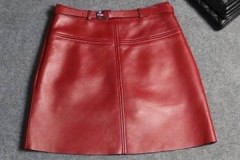 In the fashion world, there are more than 80 types of skirts of various styles.Classic straight, pleated, corrugated, multi-tiered - at least one of these models can be found in the wardrobe of every modern woman.
In the fashion world, there are more than 80 types of skirts of various styles.Classic straight, pleated, corrugated, multi-tiered - at least one of these models can be found in the wardrobe of every modern woman.
But not everyone knows how to iron a skirt correctly. You need to take into account the heating temperature of the iron, the features of the model, and the type of fabric, so you definitely can’t do without practical advice in this matter.
Content
How to prepare a product for ironing?
The key to a woman’s attractive and neat appearance is a well-ironed skirt. The most difficulties arise with such fashionable models as pleated and corrugated.
Before you start ironing, you should study the product labeling, that is, “read” the symbols on the tag on the reverse side of the item. This small label must have a picture of an iron, usually with one, two or three bold dots inside.
 They mean the following:
They mean the following:
- one point – iron at low temperature, no more than 110 degrees;
- two points – iron at medium temperature, no more than 150 degrees;
- three dots – iron at high temperature, but not exceeding 200 degrees.
If there are no fat spots on the image of the iron, this means that the skirt can be ironed at any temperature.
The crossed out symbol indicates that the product should not be ironed after washing., or you can iron it, but do not steam it.
The biggest problem that wearers of draped skirts may face is that the pleats can lose their shape over time.
To prevent this from happening, before placing the item on the ironing board, all folds must be secured with the most common wide stitches. The thread and needle should be thin so that there are no holes or puffs left in the fabric.
How to iron it?
You should start ironing your skirt from the pockets, if there are any. They need to be turned outward and ironed very well.
Next, iron the skirt in the following order:
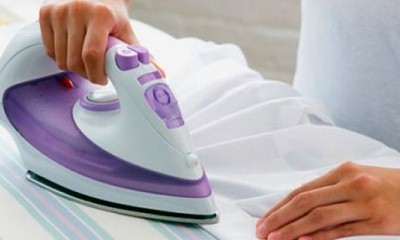 Belt. The waist part of the skirt should be pulled over the ironing board. Gently iron, turning the product in a circle.
Belt. The waist part of the skirt should be pulled over the ironing board. Gently iron, turning the product in a circle.- Main part. You should start ironing from the inside out. First of all, you should iron the top part of the skirt, turning the product around the ironing board. Pay attention to seams and darts at the waist.
Now turn the skirt inside out. If the tag does not restrict ironing with steam, you can use this iron feature. But when steaming, you should first run the hot sole over the material, without touching the fabric.
- Lightning. First, you need to fasten the zipper, and barely touching the iron, run it over the fabric covering it. Then unzip the zipper. Iron the fabric around it. It is important not to touch the hot iron to the zipper itself, especially if it is made of plastic or nylon, otherwise it will melt.
- Hems. The bottom of the skirt should be ironed first from the wrong side without steam, and then turn the product inside out, and iron the hems again with steam.
- Folds. Draped skirts are much more difficult to iron than straight-cut ones. Experts recommend sweeping away folds before washing to maintain their original shape. But if the skirt is very wrinkled or the fabric is too thick, you will have to iron each fold separately.
To do this, the product is turned outward. First, iron the fold of each fold. Then they place clean paper under it so that there are no prints on the front side, and smooth out the fold. To make the folds clearer, it is recommended to use starch spray or a solution of white toilet soap. Folds should be ironed only in the longitudinal direction of the thread.
Features for various styles
It is necessary to iron skirts of different styles taking into account the peculiarities of their cut:
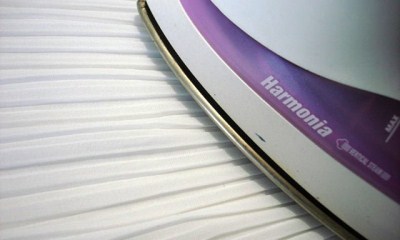 with folds – the skirt should be ironed almost immediately after washing, while wet, before the fabric is completely dry;
with folds – the skirt should be ironed almost immediately after washing, while wet, before the fabric is completely dry;- with folds in front – the product is ironed similarly to trousers with creases, slowly, through a damp cloth;
- corrugation – the folds in such a skirt resemble an “accordion”; they have the same width and depth along the entire length of the product. Before ironing, they should be swept away with a thin needle using wide stitches;
- pleated – the folds in the pleat are wider than the hem, they are located as if “lying down”. This skirt should be ironed in the same way as the “corrugated” model;
- multi-tiered – each layer of such a skirt should be ironed separately, starting from the bottom tier and ending with the top.
We take into account the types of fabric
The process of ironing skirts made from different types of fabric has its own characteristics. They can be visually presented in the form of a table:
| Fabric type | Temperature | Peculiarities |
| Silk | ? or “Silk”, without steam | Iron from the wrong side. It is not recommended to spray the fabric with a spray bottle, as water marks may remain. |
| Wool | ?? orWool", a lot of steam | Iron through damp cotton cloth, thoroughly steaming each area of the product. |
| Knitwear | ? or “Silk”, with steam | Iron through folded gauze using the steam function. |
| Polyester | ? or “Silk”, without steam | Iron barely touching the surface of the product with the iron, very quickly, without stopping for a long time in one area. |
| Leather | ? or “Silk”, without steam | Only from the wrong side and through thick cotton fabric, unless there are restrictions from the product manufacturer. |
| Artificial leather (leatherette) | Do not iron | Products made from this fabric are not ironed even at the lowest temperature, nor are they sewn with a needle before washing. A faux leather skirt should be washed and dried correctly, then you won’t have to smooth out the folds. |
How to steam iron?
 When we talk about pleated or ruffled skirts, then Only a steamer or steam generator can handle drapery better than any iron.
When we talk about pleated or ruffled skirts, then Only a steamer or steam generator can handle drapery better than any iron.
There are fundamental differences in the operation of these devices. The steamer produces wet steam under pressure, and the steam generator produces dry steam. There are also differences in the temperature of the steam. For a steamer it does not exceed 100 degrees, and for a steam generator it reaches 160 degrees.
But these devices have one important advantage: they easily smooth out what the iron was powerless to handle.
The skirt should be ironed in the following order:
- Hang the skirt on hangers. Turn on the steamer and immediately begin processing the product. But the steam generator does not start generating steam immediately, but after 5-7 minutes.
- Steam the skirt lining. Then the main fabric will no longer be wrinkled.
- Steam the folds. When sewing products, they are treated with a special solution, so under the influence of steam they easily restore their shape.
How to cope without electrical appliances?
You can deal with creases in fabric without an iron by using one of the following methods:
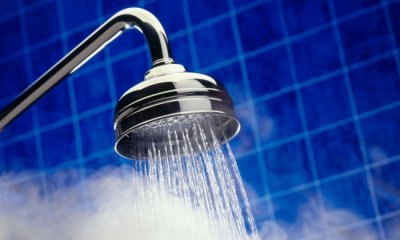 Steam generator effect. Fill a bath full of hot water and hang your skirt on hangers. After 2 hours, there will be many fewer creases on the fabric.
Steam generator effect. Fill a bath full of hot water and hang your skirt on hangers. After 2 hours, there will be many fewer creases on the fabric.- Proper drying. Immediately after washing, the skirt should be shaken several times and hung on hangers. During the drying process, the product should be shaken periodically until completely dry.
- Vinegar solution. Add water, vinegar and fabric softener in equal proportions to a spray bottle. Treat all creases with vinegar solution and let dry.
- Wet towel. Prepare a towel larger than the product itself. Moisten it and place the crumpled skirt on top. Straighten the creases manually, then hang the product on hangers.
- Hot curling iron. A hair curling iron, which women use to straighten their unruly curls, can help deal with creases in the fabric. Just before using the curling iron, you need to make sure that there are no traces of hair styling product left on them.
Adviсe
Before you start ironing your skirt, It would be a good idea to use the following tips:
- Before starting the procedure, carefully examine the tag on the reverse side of the product. Use only the temperature indicated on it.
- You should start ironing the skirt only from the wrong side, and then from the front side, if necessary.
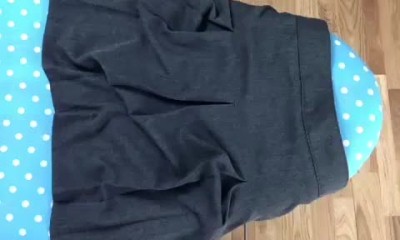 When working with a hot iron, you should not keep it in one place for a long time so that it does not overheat. This may cause yellow spots and streaks to appear.
When working with a hot iron, you should not keep it in one place for a long time so that it does not overheat. This may cause yellow spots and streaks to appear.- In order for the ironed folds to keep their shape for a long time, they should be ironed through a damp cotton cloth soaked in a soap solution with the addition of 1 tablespoon of vinegar (per 3 liters of water).
- A damp cotton cloth will help to deal with shiny areas that sometimes form on dark things. It should be wetted, wrung out and ironed the problem area, repeating the action several times, then slightly lift the pile on the fabric using a soft brush.
Conclusion
Many women call the skirt the most capricious part of a woman's wardrobe. It is especially difficult with pleated or corrugated models.
Most products can be easily processed with hot steam, which helps restore even folds that have lost their original shape. With this device, even the most wrinkled item will become perfectly ironed in just a few minutes.
